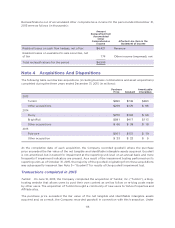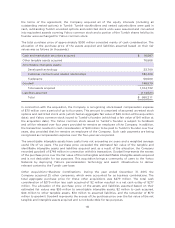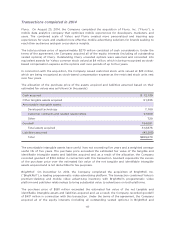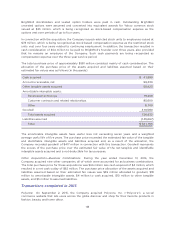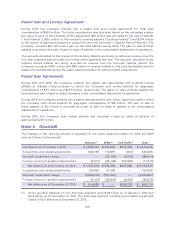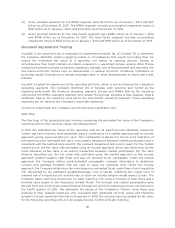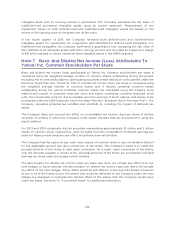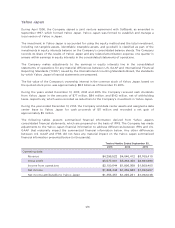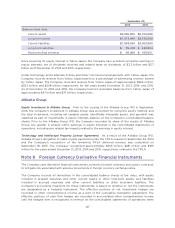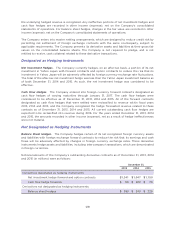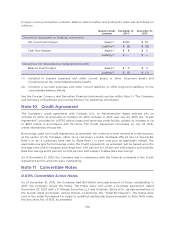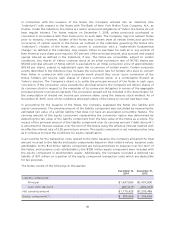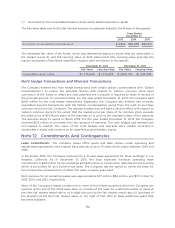Yahoo 2015 Annual Report Download - page 128
Download and view the complete annual report
Please find page 128 of the 2015 Yahoo annual report below. You can navigate through the pages in the report by either clicking on the pages listed below, or by using the keyword search tool below to find specific information within the annual report.
intangible asset with its carrying amount is performed. The Company estimates the fair value of
indefinite-lived purchased intangible assets using an income approach. Measurement of any
impairment losses on both definite-lived and indefinite-lived intangible assets are based on the
excess of the carrying value of the asset over its fair value.
In the fourth quarter of 2015, the Company reviewed both definite-lived and indefinite-lived
intangible assets for impairment. No impairment was identified for definite-lived intangibles. For
indefinite-lived intangibles, the Company performed a quantitative test comparing the fair value of
the indefinite-lived intangible assets with their carrying amount and recorded an impairment charge
of $15 million related to certain indefinite-lived intangible assets in the EMEA segment.
Note 7 Basic And Diluted Net Income (Loss) Attributable To
Yahoo! Inc. Common Stockholders Per Share
Basic and diluted net income (loss) attributable to Yahoo! Inc. common stockholders per share is
computed using the weighted average number of common shares outstanding during the period,
excluding net income attributable to participating securities (restricted stock units granted under the
Directors’ Stock Plan (the “Directors’ Plan”)). Diluted net income (loss) per share is computed using
the weighted average number of common shares and, if dilutive, potential common shares
outstanding during the period. Potential common shares are calculated using the treasury stock
method and consist of unvested restricted stock and shares underlying unvested restricted stock
units, the incremental common shares issuable upon the exercise of stock options, and shares to be
purchased under the 1996 Employee Stock Purchase Plan (the “Employee Stock Purchase Plan”). The
Company calculates potential tax windfalls and shortfalls by including the impact of deferred tax
assets.
The Company takes into account the effect on consolidated net income (loss) per share of dilutive
securities of entities in which the Company holds equity interests that are accounted for using the
equity method.
For 2013 and 2014, potentially dilutive securities representing approximately 10 million and 3 million
shares of common stock, respectively, were excluded from the computation of diluted earnings per
share for these periods because their effect would have been anti-dilutive.
The Company has the option to pay cash, issue shares of common stock or any combination thereof
for the aggregate amount due upon conversion of the Notes. The Company’s intent is to settle the
principal amount of the Notes in cash upon conversion. As a result, upon conversion of the Notes,
only the amounts payable in excess of the principal amounts of the Notes are considered in diluted
earnings per share under the treasury stock method.
The denominator for diluted net income (loss) per share also does not include any effect from the
note hedges. In future periods, the denominator for diluted net income (loss) per share will exclude
any effect of the note hedges, if their effect would be anti-dilutive. In the event an actual conversion
of any or all of the Notes occurs, the shares that would be delivered to the Company under the note
hedges are designed to neutralize the dilutive effect of the shares that the Company would issue
under the Notes. See Note 11—“Convertible Notes” for additional information.
124



